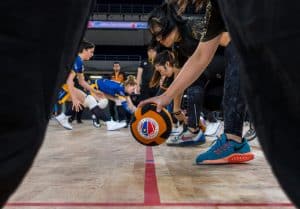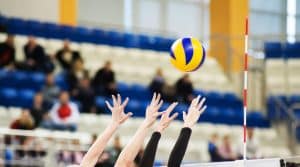Best Sports for College Admissions
Engaging in the best sports for college admissions can shape your future, offering an edge that transcends academic achievements. Every year, millions of students strive for excellence, aiming to make their college applications stand out. Are you ready to join them and transform your ordinary application into an extraordinary one? Stay tuned as we unveil the powerful impact that participating in the right sports can have on your college admissions journey. Unleash your potential—your future awaits!
Understanding the Role of Sports in College Admissions
The Importance of Athleticism in Higher Education
Athletics play a powerful role in higher education. They encourage the holistic development of students, enhancing not just their physical prowess but also their emotional intelligence and social skills. Schools acknowledge this value and hence regard students’ athleticism with respect and interest.
Participating in sports allows students to engage in physical activities that promote overall well-being. Regular exercise has been linked to improved mental health, reduced stress levels, and increased cognitive function. By incorporating sports into their college experience, students can maintain a healthy lifestyle and develop habits that will benefit them throughout their lives.
In addition to the physical benefits, sports also foster a competitive spirit and inspire athletes to strive for excellence—attributes not confined to the sports field but that translate into academic success as well. The discipline and determination required to excel in sports can transfer to the classroom, helping athletes develop strong work ethics and perseverance.

How Sports Participation Can Boost Your Application
Participating in sports also highlights one’s ability to balance academics with other interests, a trait that admissions officers appreciate. Dedication to a sport shows reliability, commitment, and the ability to manage time effectively. These are qualities that can set an athlete apart from other applicants in the admissions process.
Moreover, leadership roles in sports—being a team captain, for example—add an additional layer of appeal to one’s application, reflecting one’s ability to lead and work well within a team setting. The experience of leading a team not only demonstrates strong leadership skills but also the ability to communicate effectively, resolve conflicts, and motivate others towards a common goal.
Furthermore, sports can provide valuable opportunities for personal growth and character development. Athletes often face challenges and setbacks, such as injuries or losses, which require resilience and the ability to bounce back. These experiences can shape an individual’s character, teaching them important life lessons about perseverance, determination, and the importance of a positive mindset.
Participating in sports can also foster a sense of community and belonging. Athletes often form close bonds with their teammates, creating a support system that extends beyond the playing field. This sense of camaraderie can contribute to a student’s overall happiness and well-being, enhancing their college experience.
Additionally, sports can provide opportunities for athletes to give back to their communities. Many student-athletes engage in volunteer work or use their platform to raise awareness for social issues. This commitment to making a positive impact demonstrates a sense of social responsibility and can further strengthen an applicant’s profile.
In conclusion, sports play a significant role in college admissions. They not only contribute to a student’s physical and mental well-being but also develop important life skills and qualities that are highly valued by admissions officers. From time management and leadership to resilience and community engagement, sports participation can greatly enhance an applicant’s profile and set them apart from their peers.
Analyzing the Most Beneficial Sports for College Admissions
Team Sports and Leadership Skills
Sports like football, basketball, and baseball place a strong emphasis on teamwork. This fosters a sense of unity, teaching students the values of solidarity, collaboration, and shared success. Being part of a team also hones one’s leadership skills, which can help to further boost an application.
Admissions officers are not just looking for academic achievers; they are looking for future leaders. A student-athlete who has held leadership roles showcases their potential to contribute to and elevate the university community.
Team sports provide an ideal platform for students to learn how to work effectively with others towards a common goal. The dynamics of a team environment allow individuals to understand the importance of communication, cooperation, and compromise. These skills are not only valuable in the field but also in the classroom and future professional settings.
Furthermore, being part of a team instills a sense of responsibility and accountability. Student-athletes learn to prioritize their commitments, manage their time efficiently, and fulfill their obligations both academically and athletically. This level of discipline and dedication is highly regarded by college admissions officers, as it demonstrates the ability to handle multiple responsibilities and thrive under pressure.

Individual Sports and Self-Discipline
Individual sports such as tennis, swimming, or track and field require a great deal of self-discipline. Without the immediate support of a team, athletes need to rely on their intrinsic motivation to improve their skills and performance. This demonstrates to college admissions officers a student’s capacity for determination, focus, and self-reliance—traits that make a successful student.
These sports also develop a student’s ability to handle pressure and adversity, which are vital life skills for navigating not only the academic rigors of college but also future career challenges.
Engaging in individual sports requires athletes to set personal goals and work tirelessly to achieve them. The process of self-improvement in these sports involves analyzing one’s performance, identifying areas for growth, and implementing strategies to enhance skills. This level of self-awareness and commitment is highly valued by college admissions officers, as it showcases a student’s ability to take initiative and persist in the face of obstacles.
Moreover, individual sports provide students with a unique opportunity for self-expression and creativity. Athletes have the freedom to develop their own style and technique, allowing them to showcase their unique talents and abilities. This aspect of individual sports not only promotes personal growth but also contributes to the diversity and richness of the college community.
In conclusion, both team sports and individual sports offer valuable experiences and skills that can greatly enhance a college application. Whether it is the ability to work collaboratively as part of a team or the discipline and self-motivation required in individual sports, participating in sports can provide students with a competitive edge in the college admissions process.
The Impact of Scholarships on College Admissions
Scholarships have a profound impact on college admissions, providing students with the opportunity to cover part or all of their college expenses. While there are various types of scholarships available, athletic scholarships are particularly noteworthy. These scholarships not only offer financial support but also open doors for students who may otherwise struggle with the financial aspects of tertiary education.
Athletic scholarships, however, are not simply handed out to anyone. They require talent, commitment, and dedication to maintaining academic standards. For those who can meet and exceed these expectations, the rewards can be immense. Not only do athletic scholarships alleviate the burden of college expenses, but they also provide students with the chance to pursue their passion for sports while obtaining a higher education.
Athletic Scholarships: An Overview
Athletic scholarships are highly sought after by students who excel in sports. Universities in the United States offer varied scholarship programs, providing opportunities for athletes to showcase their skills and receive financial support. These scholarships serve as a recognition of the hard work and dedication that student-athletes put into their respective sports.
Aside from the financial benefits, athletic scholarships offer numerous advantages to students. They provide access to top-tier coaching, state-of-the-art training facilities, and the opportunity to compete at a collegiate level. Additionally, being a recipient of an athletic scholarship can enhance a student’s resume and open doors for future career opportunities in the sports industry.

The Process of Securing a Sports Scholarship
Securing a sports scholarship is a journey that requires careful planning, preparation, and persistence. It begins with early identification of the sport in which one excels and a commitment to developing talent and skills through rigorous practice and training. The selection of a sport often aligns with evaluating the best sports for college admissions, ensuring both athletic and academic opportunities.
Once the foundation is laid, the next phase involves showcasing these skills to college coaches and recruiters. This is typically done through athletic competitions and performances where student-athletes have the opportunity to demonstrate their abilities and catch the attention of college scouts. It is important for aspiring athletes to perform at their best during these events, as they serve as a platform for exposure and recognition.
In addition to participating in competitions, student-athletes should also take a proactive approach to reaching out to colleges of interest. This includes sending sports resumes and footage of their most spectacular performances. By doing so, they can capture the attention of college coaches and recruiters, increasing their chances of being considered for athletic scholarships.
Furthermore, maintaining a strong academic record is crucial when pursuing an athletic scholarship. Colleges and universities often prioritize student-athletes who excel both on the field and in the classroom. Therefore, student-athletes must demonstrate their ability to balance their athletic commitments with their academic responsibilities.
In conclusion, athletic scholarships have a significant impact on college admissions. They provide students with financial support, access to top-tier resources, and the opportunity to pursue their passion for sports while obtaining a higher education. Securing an athletic scholarship requires talent, commitment, and a proactive approach to showcasing one’s skills to college coaches and recruiters. By taking these steps, student-athletes can increase their chances of receiving an athletic scholarship and fulfilling their dreams of playing sports at the collegiate level.
Balancing Academics and Athletics for Success
Time Management for Student Athletes
Managing academics and sports simultaneously demands a high level of organization and time management. Establishing a structured daily routine, setting priorities, and allocating time judiciously between academics and sports activities can contribute to a well-rounded, fulfilling high school experience.
One effective strategy for time management is to create a detailed schedule that outlines specific blocks of time for studying, attending classes, practicing sports, and participating in extracurricular activities. By adhering to this schedule, student-athletes can ensure that they dedicate sufficient time to both their academic responsibilities and their athletic pursuits.
Furthermore, it is essential for student-athletes to develop effective study habits. This includes finding a quiet and conducive environment for studying, breaking down larger tasks into smaller, manageable chunks, and utilizing effective study techniques such as creating flashcards or summarizing key concepts in their own words.
Successful student-athletes also ensure they make time for adequate rest and relaxation to avoid burnout. Engaging in activities that promote relaxation, such as practicing mindfulness or participating in hobbies outside of sports and academics, can help student-athletes recharge and maintain a healthy balance in their lives.
Maintaining Academic Excellence While Playing Sports
While excelling at sports could make a student-athlete’s college application stand out, it should not come at the expense of academic performance. Achieving and maintaining a strong grade point average is equally important when looking to secure college admission. In this context, aligning athletic participation with the best sports for college admissions can be a strategic move, amplifying both academic and athletic appeal.
Student-athletes can maintain academic excellence by effectively managing their time and prioritizing their commitments. This may involve setting aside specific study periods each day, seeking help from teachers or tutors when needed, and staying organized with assignments and deadlines.
In addition, student-athletes should take advantage of any academic support services offered by their school or sports program. These services may include study groups, tutoring sessions, or access to academic advisors who can provide guidance on course selection and time management strategies.
Remember, colleges are academic institutions first and foremost. A well-rounded student, capable of balancing sports with academic rigor, represents the ideal candidate for admission. Admissions officers value not only athletic achievements but also a student’s ability to excel academically and contribute to the intellectual community on campus.
By maintaining a strong academic focus while participating in sports, student-athletes demonstrate their commitment to personal growth and development. They showcase their ability to handle multiple responsibilities and thrive in challenging environments, which are skills that will serve them well in college and beyond.

Preparing for College Admissions as a Student Athlete
Building a Strong Sports Resume
A robust sports resume can greatly strengthen a college application. The resume should highlight athletic achievements, leadership roles in sports, and any sports-related community service performed. Crucially, it should also clearly communicate the student’s passion and commitment to their sport.
Remember to keep the resume updated and structured, making sure to add any new achievements as they occur. This thorough preparation can showcase dedication and professionalism to admissions officers.
Communicating with College Coaches and Recruiters
Building relationships with college coaches and recruiters can go a long way toward securing a spot at your college of choice. Regular and respectful communication expressing your interest in their program, showcasing your skills, and discussing potential scholarship opportunities can improve your chances of being noticed and considered.
In conclusion, participating in sports can significantly bolster college applications by showcasing a multitude of desirable traits. Student-athletes can both enrich the campus environment and stand as examples of balance and dedication, making them highly sought-after in the competitive world of college admissions.





































